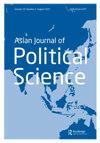新加坡公私伙伴关系的风险因素分析:六个案例研究
IF 1
Q3 POLITICAL SCIENCE
引用次数: 9
摘要
摘要尽管公私合作在过去几十年中在全球广受欢迎,但在很大程度上,由于与项目相关的许多风险因素,公私合作并不总是能取得成功。为了解释PPP有时是如何失败的以及为什么失败的,本研究考虑了新加坡从2000年到2019年最近PPP经验的成功-失败连续体。在仔细研究了六个失败案例后,我们确定了以下潜在风险因素:项目执行期间的财务能力不稳定、出现的不可抗力、不可预见的问题、缺乏技术和/或财务远见、企业管理不善(如施工延误和服务质量差),以及由于缺乏明确和支持性的治理框架而造成的不利投资环境。此外,我们发现大多数风险因素往往出现在合同管理(运营前)和项目管理(运营)阶段。这些风险似乎会同时(有时是按顺序)而不是孤立地导致多个不成功的PPP的运营失败和随后的合同终止。总之,这项研究为决策者提供了更好的风险分配以及公共和私人合作伙伴之间的适当相互协调是PPP成功的关键因素。本文章由计算机程序翻译,如有差异,请以英文原文为准。
A closer look at risk factors for public-private partnerships in Singapore: six case studies
ABSTRACT Despite its global popularity over the past few decades, the public-private partnership (PPP) has not always led to successful outcomes, due largely to a number of risk factors associated with the projects. To explain how and why PPPs sometimes fail, this study considers the success-failure continuum of Singapore’s recent PPP experience from 2000 to 2019. After taking a critical, close look at the six failed cases, we identify the following latent risk factors: unstable financial capacity during the execution period of a project, force majeure unforeseen problems that arise, a lack of technical and/or financial foresight, poor corporate management (e.g. delays in construction and poor-quality service delivery), and an unfavourable investment environment stemming from the lack of a clear and supportive governance framework. In addition, we find that most risk factors tend to appear during the contract management (pre-operation) and project management (operation) phases. Such risks seem to drive the operational failure and subsequent contract termination of multiple unsuccessful PPPs, simultaneously (and sometimes sequentially) rather than in isolated fashion. All in all, this study offers for policymakers that better risk allocation and proper, mutual coordination between the public and private partners represent essential factors for PPP success.
求助全文
通过发布文献求助,成功后即可免费获取论文全文。
去求助
来源期刊

Asian Journal of Political Science
POLITICAL SCIENCE-
CiteScore
2.00
自引率
0.00%
发文量
11
期刊介绍:
Asian Journal of Political Science ( AJPS) is an international refereed journal affiliated to the Graduate School of Public Administration, Seoul National University. Published since 1993, AJPS is a leading journal on Asian politics and governance. It publishes high-quality original articles in major areas of political science, including comparative politics, political thought, international relations, public policy, and public administration, with specific reference to Asian regions and countries. AJPS aims to address some of the most contemporary political and administrative issues in Asia (especially in East, South, and Southeast Asia) at the local, national, and global levels. The journal can be of great value to academic experts, researchers, and students in the above areas of political science as well as to practical policy makers, state institutions, and international agencies.
 求助内容:
求助内容: 应助结果提醒方式:
应助结果提醒方式:


